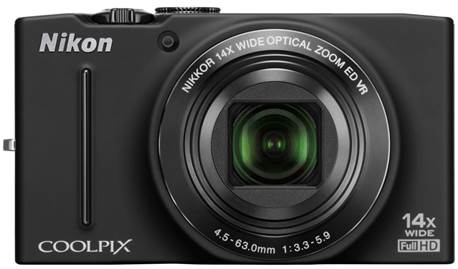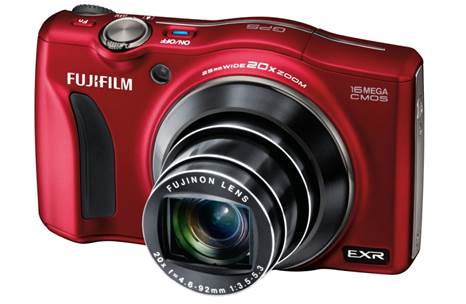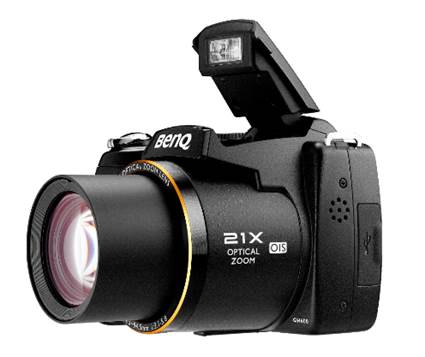Now that we’ve got the bigwigs out of the
way, we can focus on the smaller, more basic point-n-shoot cameras that we got.
For this category, we restricted the models to those that fell below a price
cap of $22,500 and only included those that were released after October 2012.
Features and design
In this matchup, we’ve got three compact
point and shoot cameras: The Nikon Coolpix S8200, Fujifilm F660 EXR and the
BenQ GH210 and two ultra-zoom cameras: the Nikon Coolpix L610 and the BenQ
GH650.
The GH650 offers the maximum zoom in this
category, with the lens capable of pulling off shots in the 22-580 mm range. We
were actually quite surprised to see the lens go down to 22 mm, something we
have not seen in a lot of point and shoot cameras as they generally tend to
favor 24 or 28 mm as a starting point.

The
Nikon Coolpix S8200
The Nikon Coolpix S8200 and the BenQ GH210
ship with a very standard set of features, f/3.5-5.8 aperture lens, a focal
length of roughly 25-350 mm and a 1/2.3-inch sensor , but the shocker on the
GH210 is that it uses a CCD sensor, a type that is now being phased out by most
manufacturers. However, it’s interesting to note that the BenQ site lists the
sensor on the GH210 as one made by Sony, while the one on the GH650 as made by
Panasonic. Similarly, the optics on the BenQ cameras also come from Sony,
although we have serious doubts whether these optics match the quality found on
Sony’s own cameras.
The Fujifilm F660 EXR uses an
unconventionally sized 1/2-inch sensor, making it the largest amongst those we
compared. Other than that, it also has some rather nice ergonomics, with smooth
curves and a well finished body, but the real winner for us is the mode-dial which
is placed at a slight angle on the back. It’s really easy to turn without
really having to move the thumb a lot. This did, however, at times pose a
problem as we found the dial switching on us unexpectedly even with the
slightest brush of the thumb.
Build and ergonomics
The comfort of holding a camera can be
quite subjective to the hands of the user. However, certain things remain
universal, such as the placement of the shutter button, the placement of the
zoom toggle and other buttons that are needed to access features. The
ergonomics on each of these five cameras were quite decent, though we weren’t
quite taken in by the sharp corners on the GH210. The best fit-ting camera (in
our hands) was the Fujifilm F660 EXR, which did surprise us a little, seeing
how the X10 is anything but an ergonomic marvel.

The
Fujifilm F660 EXR
When we started to play with the Nikon
Coolpix L610, we were really intrigued by the design of the camera. It has a
really gentle bulge at the top, probably as a result of the large lens, but we
haven’t seen such curvaceous design cues being implemented in cameras off late.
If anything, they have been becoming more angular and clean cut, so the curves
are a welcome change. We do however, feel that you might run into issues
fitting this into a camera case that you might have lying around. What we loved
the most about the L610, a feature that definitely made it stand out from the
rest of the cameras in this competition was the ribbed grip that’s replaced the
smooth rubber grip that’s normally found on such cameras. Speaking of build
quality, the Nikons, though obviously made of plastic, they didn’t feel flimsy
at all. The Fujifilm in fact, in spite of the plastic, felt like it could
withstand a drop or two. The BenQ cameras on the other hand felt as fragile as
egg shells in our hands. The battery door was one of the flimsiest we’ve ever
seen, operating on a very delicate spring-hinge mechanism. The GH210 felt
mostly like a toy camera with an incredibly thin plastic shell that creaked at
the slightest pressure from our fingers. Overall, the Fujifilm F660 EXR was the
best built camera out of the five with a well-polished finish, sturdy but-tons
that were placed just perfectly and the camera itself was a treat to handle.
Performance
The in-studio performance results showed
that throughout the range, the Fujifilm F660 EXR dominated the test. Thanks to
the slightly larger sensor. It was just ahead of the Nikons up until ISO 1600
and at ISO 3200, the retention of detail was visibly higher compared to the
Nikons and the BenQs.

The real world tests were a rather exciting
comparison, with the performance becoming quite hard to gauge. For example, the
Nikon S8200 had a very pleasing level of saturation, with a strong emphasis on
greens. The Fuji on the other hand had slightly lower saturation (on default
set-ting), but the greens were not over emphasized. While land-scape
photographers, or those who love shooting leaves might enjoy the Nikons, the
F660 EXR offers a better balance of colors. The BenQs offered the same balanced
saturation as the Fujifilm F660 EXR, but there is more to the overall story.
When we factored in contrast and dynamic range, the F660 did better just by a
little bit thanks to its emphasis on shadows in strongly lit scenes. We ended
up with lesser “unintentional” silhouettes with the Fuji than we did when
shooting with the Nikon or BenQ models.
Verdict
In cameras that are under `15,000, we do
not really expect stellar performance, especially when we’re used to using more
high-end imaging devices and these cameras were no exception. We decided that
the Fuji-film F660 EXR should win our Best Buyaward for its better performance
over the competition (though just by a little bit). The build quality on the
Fuji was also surprisingly good, as we’re normally used to dealing with cameras
that have a flimsy build or poor finish if they cost under 15K. But it looks
like Fuji-film cut no corners with this little beauty. We do however wish that
it had a faster lens, as that would definitely make this the camera of choice
when going anywhere, especially clubbing.